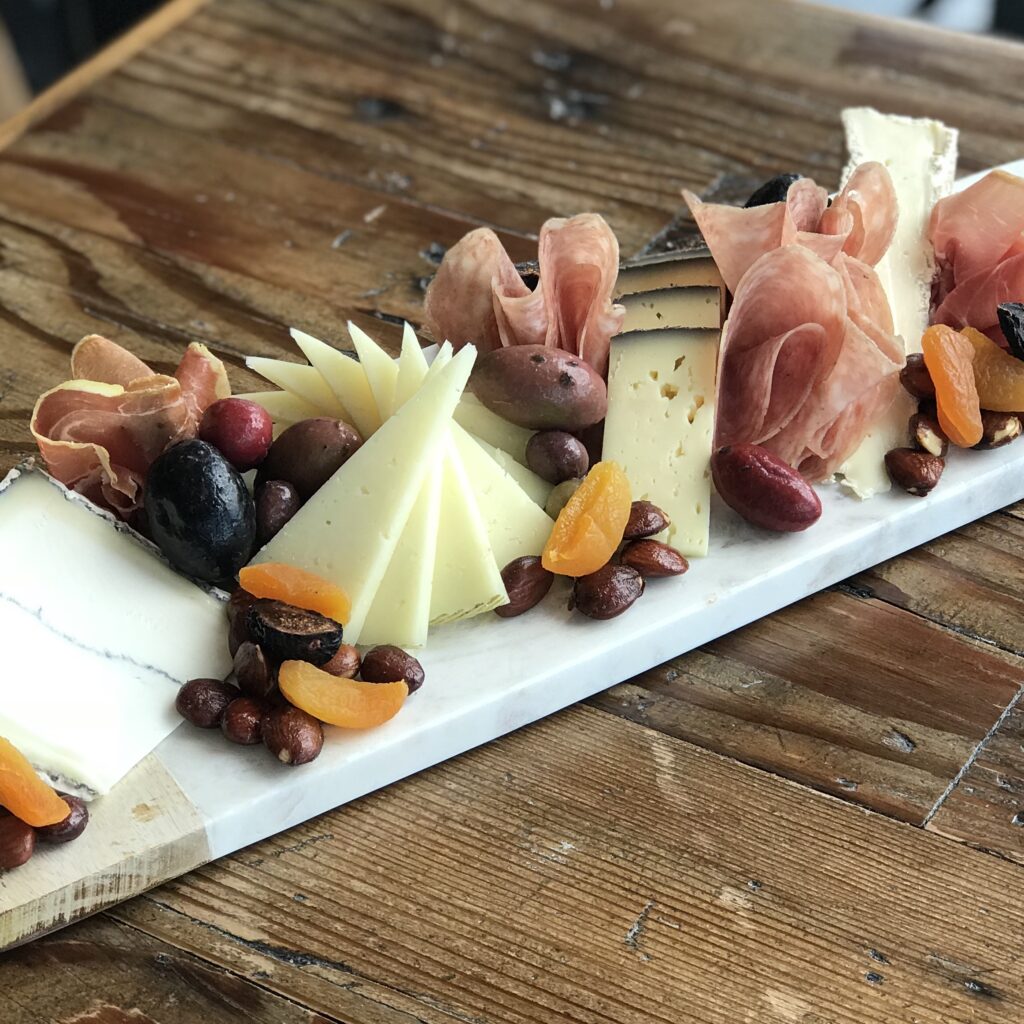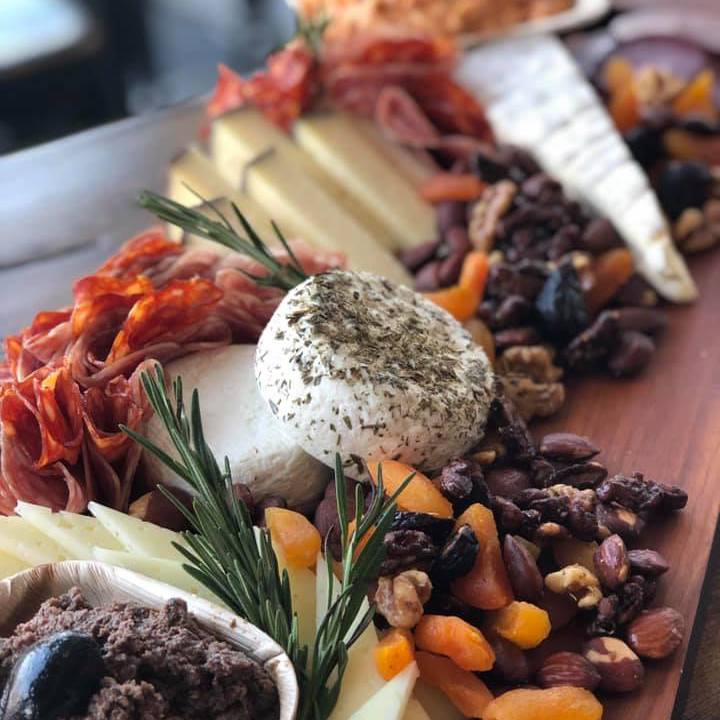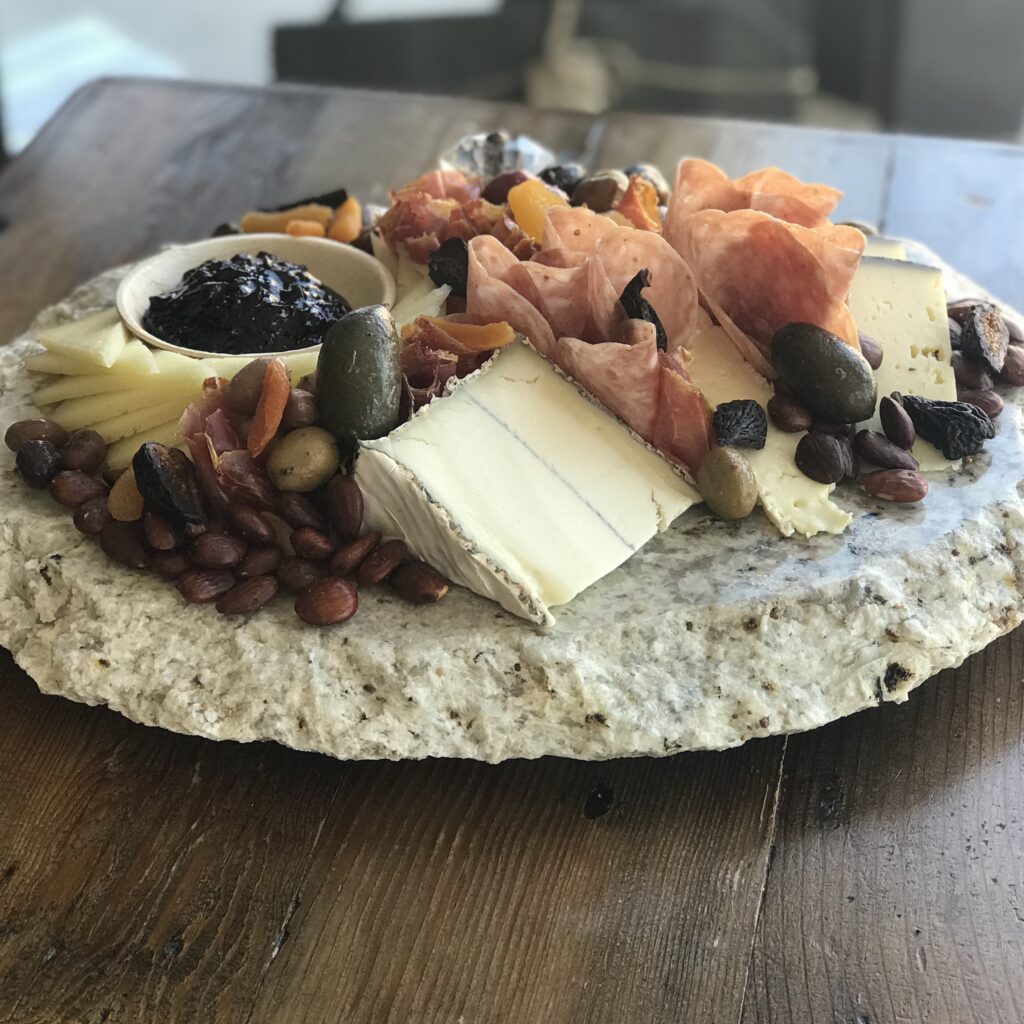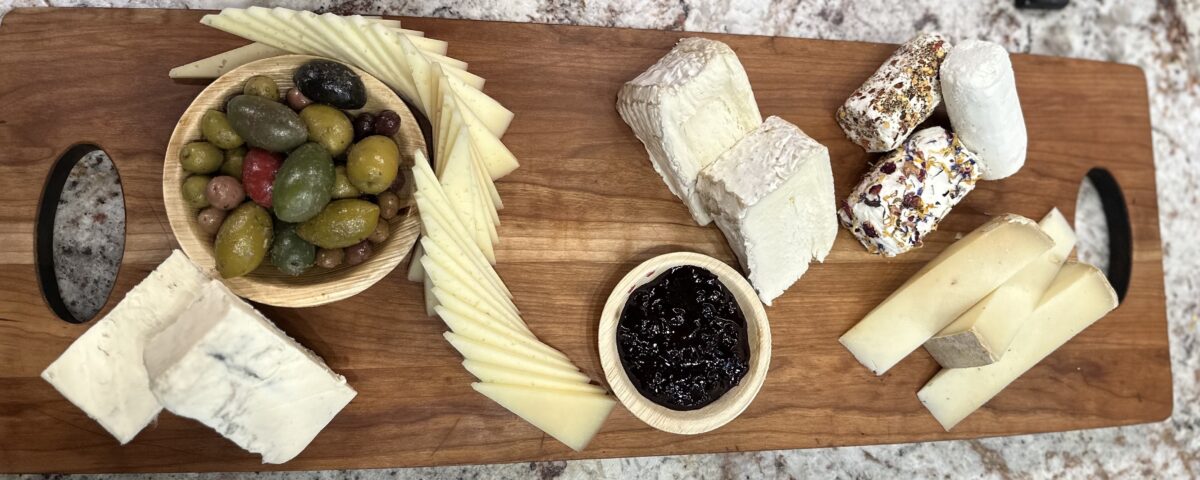
Après-Ski Eats for a Midwestern Winter
January 21, 2024
Wine Director John Kay on the Wonderful World of Wine
April 27, 2024by Katie Glaudell
Marché is here to demystify the art of charcuterie board building–all are takes is a few tips, practice, and confidence! Firstly, let’s address the term “charcuterie.” Pronounced “shar-KOO-ter-ee,” the word in English only refers to cold cured meats. So, if you don’t have meat on your board, it is technically not a charcuterie board. Now to get started…
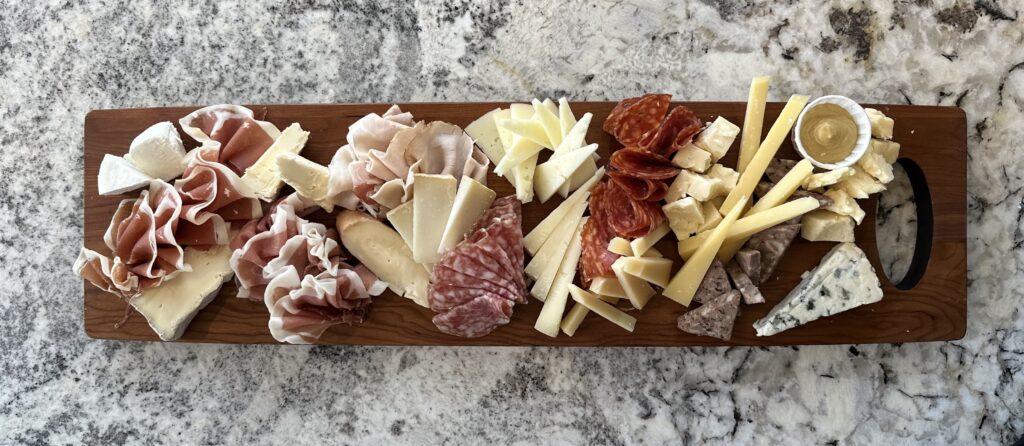
1. Selecting Ingredients
What do I even buy? Well, that depends:
- How many people is this for?
- Is this board the “main event” or just an appetizer?
- Any dietary restrictions or less adventurous palates to consider?
- Any seasonal foods and flavors you want to incorporate?
How many items should I buy?
The “3333 rule” says that a traditional charcuterie board includes 3 meats, 3 cheeses, 3 starches, and 3 accompaniments. A good starting point, but don’t take it too seriously–the board should suit your tastes.
How much of each item should I buy?
If your board is an appetizer, 2-3 ounces of cheese and 1-2 ounces of charcuterie per person is recommended.
Variety is the spice of life, and it’s also the key to a beautiful board. When choosing your ingredients, incorporate different textures, flavors, and colors to keep your eyes and palate entertained.
Choosing Cheeses
- Styles: Bloomy rinds, fresh chèvre, blues, Alpines–the list goes on.
- Textures: Just a few include pillowy, oozing, crumbly, fudgy, and crystalline.
- Milk types: Cow, goat, and sheep are the most common, each lending distinct flavors to cheese.
- Flavors: Are you looking for something with a yeasty funk? Buttery? Nutty? Tangy?
If you’re not sure which cheeses showcase what flavors, your local mongers are always happy to help.
Choosing Charcuterie
Again, variety is the name of the game–picture a trio of dark smoky beef salami, melt-in-your-mouth Prosciutto with pale ribbons of fat, and a bright pop of red-orange salami with a spicy kick. Don’t forget about options like pâté, smoked salmon, and small-format salamis you can slice at home.
Choosing Accompaniments
This is an opportunity to incorporate more color and texture, as well as flavors that balance or highlight your cheeses and meats. If you have a lot of salty and fatty elements already, the sweetness of jam or honey (or the acidic punch of pickles or mustard) will add refreshing contrast your board. Seasonal fruits and vegetables, edible flowers, and fresh herbs can take your board to the next level.
Choosing Starches
There are a lot of fun cracker options nowadays, but if you want really complex cheeses to shine, make sure to have some neutral offerings as well, like sea salt and olive oil crackers, or sliced baguette bread.
Choosing the Board
Serve your cheese and charcuterie on whatever you’d like, from grandma’s heirloom platter to a humble cutting board. If you’re shopping for something new, dark wood and slate make ingredients really pop. And depending on your party size, splitting everything onto two boards and setting them out in different locations can help with flow.
2. Prepping Your Elements
Cutting Cheeses
- Firm cheeses should be cut into bite-sized pieces.
- Soft/sticky cheeses are best left in one piece, as they can get gooey and hard to handle.
- For stubbornly crumbly cheese, lean into it! A cascade of cheddar chunks can look effortlessly rustic.
Should I Cut the Rind Off?
Rinds that are fun to eat and should be left on the cheese:
- Bloomy rinds (fluffy white ones on the outside of Bries and Camemberts)
- Geotrichum rinds (wrinkly brain-looking ones on the outside of some soft cheeses)
- Washed rinds (pinky-orange ones that give cheeses like Taleggio their funky aroma)
- Herb/floral/spiced rinds (a technique to regulate aging and infuse additional flavor)
Rinds that are less fun to eat include wax, leaf-wrapped, foil, paper, and cheese cloth. You’ll want to remove most of these rinds before assembly. However, with thin paraffin wax rinds like Manchego, or natural rinds like Parmigiano Reggiano, you can leave one side with the rind on, differentiating it from similar-looking cheeses on the board.
Folding Charcuterie
Here are some of the easiest methods beyond just rolling into a tube:
- Half-fold: Fold each slice in half and fan them out on the board.
- Quarter-fold: Fold in half, then in half again, fluffing it into a 3D shape (easier with larger slices).
- Fan (for long slices like Prosciutto): pleat the slice back and forth on itself. Pinch a pleated side, and on the other side, spread out the pleats to create a fan shape.
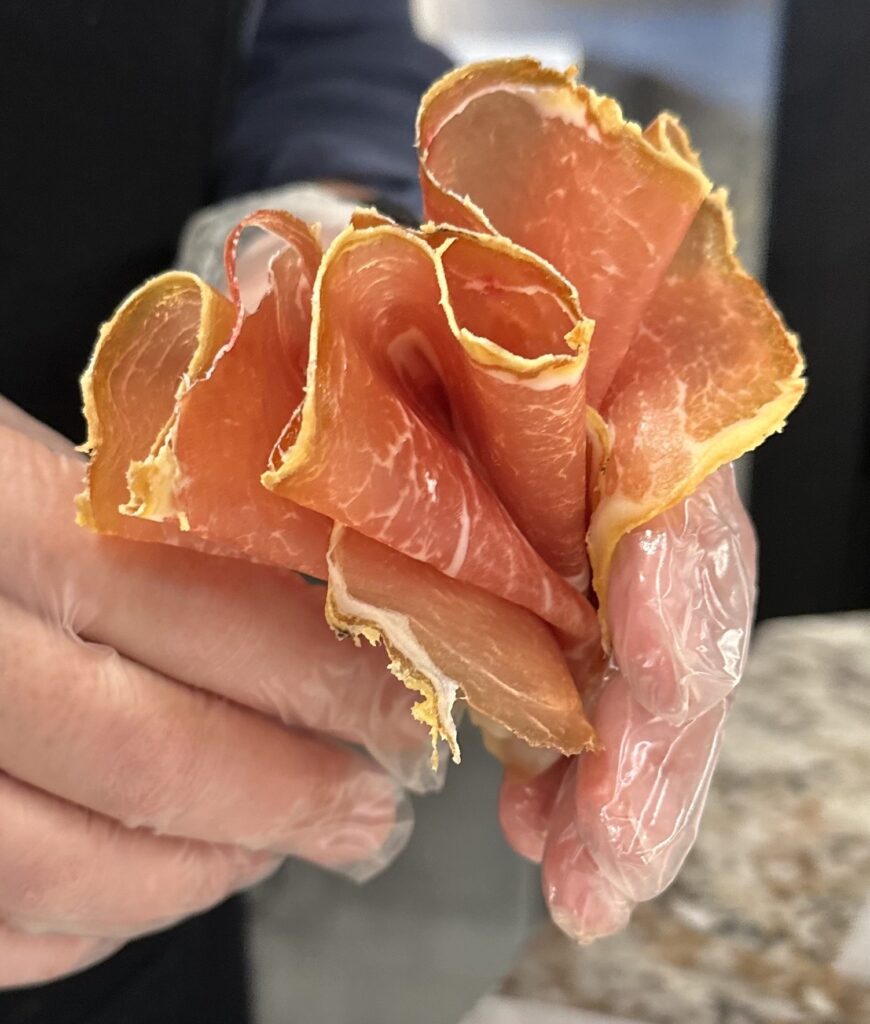
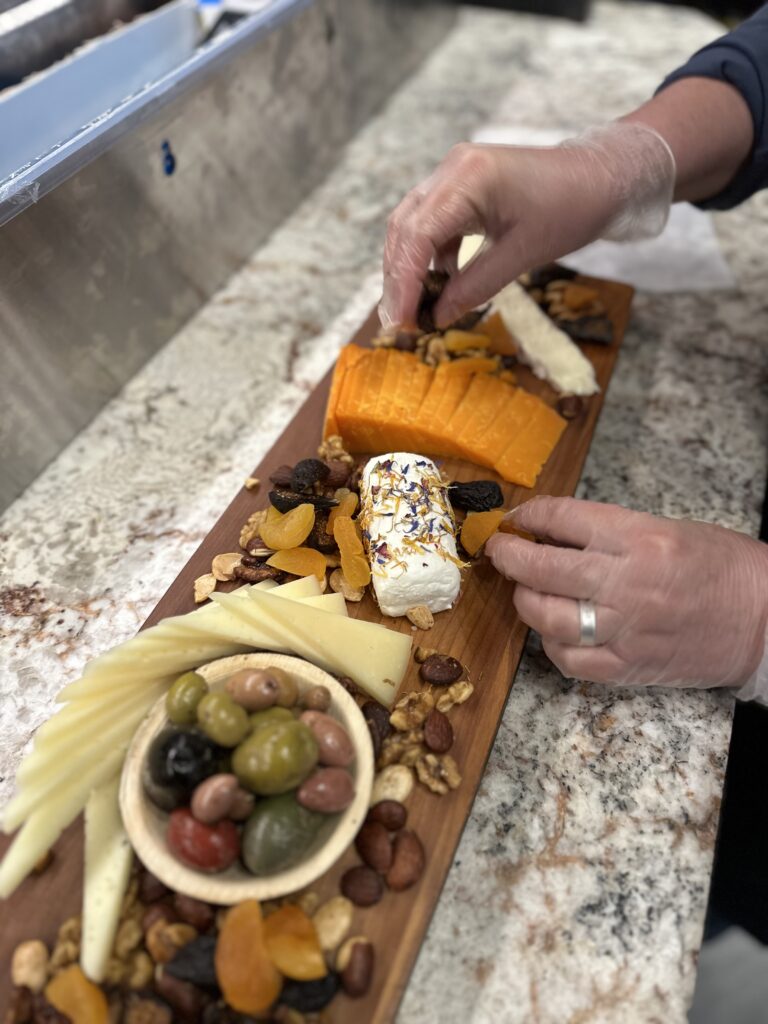
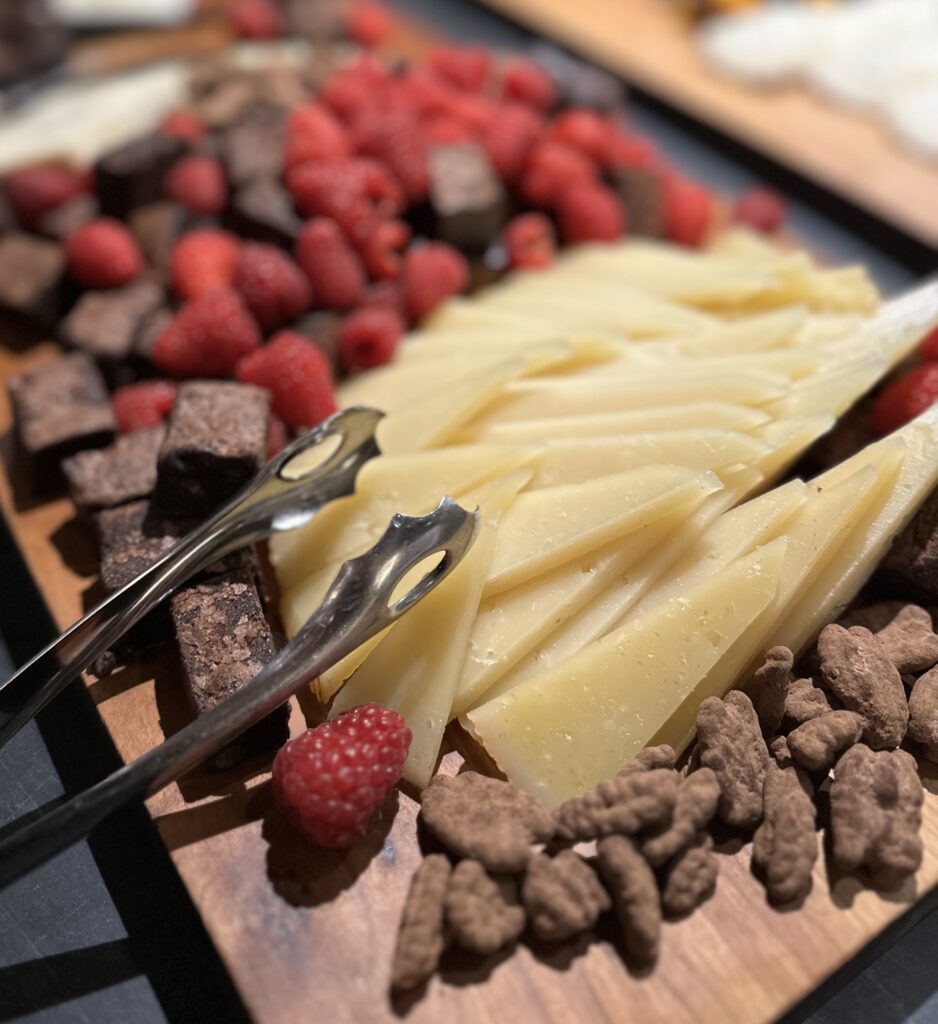
3. Assembling the Board
Assembling a board is an art form, but if you don’t feel those arty instincts, just follow these principles:
- Asymmetry and flowing lines of ingredients = effortlessly elegant
- Symmetry and geometric patterns = playful and modern
- Staggered and piled ingredients = visual interest (flat is boring)
- Contrasting colors/textures = each element will stand out
Don’t get discouraged if it’s not shaping up how you envisioned! Follow these steps in order, and you can always rearrange elements as you go:
- Lay down the elements that cannot shape-shift, like bowls of jam and whole wedges of cheese.
- Add firm elements like pieces of cheese that will stay where you place them without falling or rolling around.
- Prop up less-sturdy elements like folded charcuterie against what’s already on the board.
- Fill in any remaining gaps on the board with small items like cut fruit and fresh herbs.
If you need to refrigerate before serving, leave the starches off the board so they don’t lose their crispiness.
4. Serving Your Cheese and Charcuterie Board
Cheeses are more flavorful closer to room temperature, so we recommend removing the board from the fridge 30 minutes to an hour before serving. Make sure your setup is user-friendly with:
- Serving utensils and cheese knives
- Space around the board for guests to set their plates/drinks down while serving themselves
- Little signs to identify cheeses if you have guests with dietary restrictions
Just remember–variety is the key, have fun, and don’t sweat it! Happy board building!
